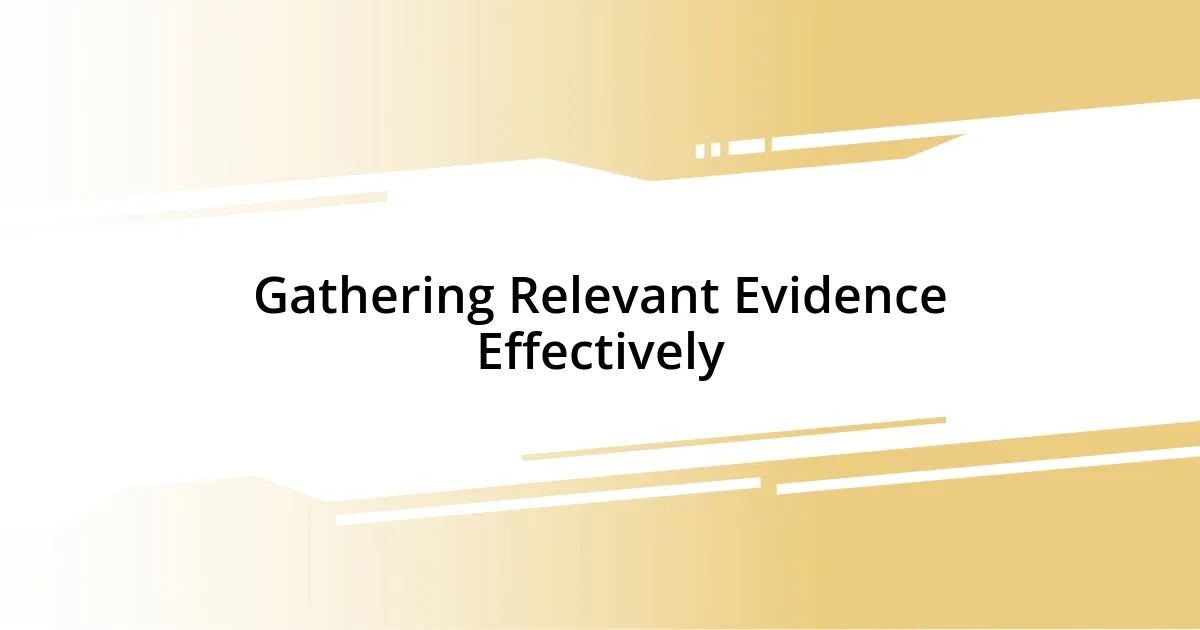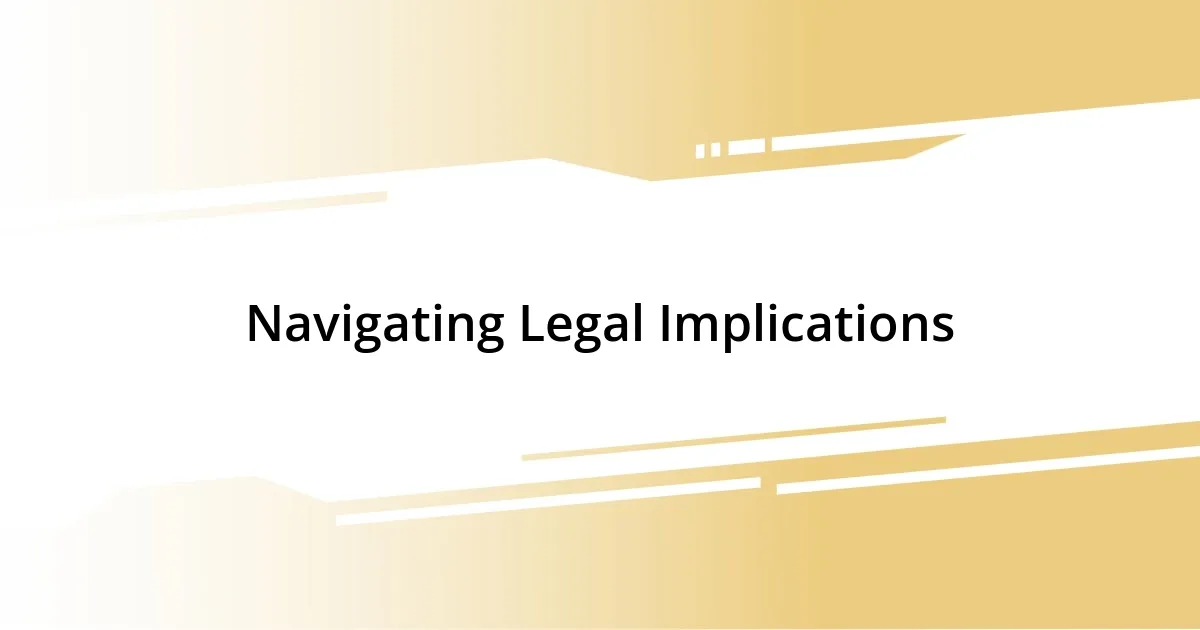Key takeaways:
- Effective investigation relies on detail-oriented evidence gathering and the importance of collaboration with colleagues for diverse perspectives.
- Key indicators of public official misconduct include unexplained financial gains, lack of transparency, and conflicts of interest.
- Building trust and empathy when interacting with whistleblowers is crucial for uncovering valuable insights.
- Utilizing media, including social media and documentaries, can significantly amplify exposure of misconduct and engage the community in accountability efforts.

Understanding the Investigation Process
The investigation process is intricate, often requiring a keen eye for detail and a lot of patience. I still remember the rush of adrenaline as I sifted through stacks of documents, wondering what hidden truths might surface. It’s a bit like solving a puzzle—each piece gives you a clearer picture of the whole.
As I delved deeper, I learned that gathering credible evidence is crucial. There were moments of doubt, especially when faced with incomplete information. I often asked myself, “Am I seeing what’s really there, or just what I want to see?” This kind of self-reflection helped me stay grounded and focused, reminding me of the responsibility I bore as an investigator.
Collaboration can often be the unsung hero of the investigation process. Working alongside skilled colleagues, I found that sharing insights not only broadened my perspective but also enriched our findings. Have you ever noticed how fresh eyes can spot what you’ve overlooked? That realization taught me the value of teamwork in unraveling complex narratives.

Identifying Public Official Misconduct
Identifying misconduct among public officials often starts with careful observation and scrutiny of their actions. During my investigations, I found that unusual behaviors or patterns can serve as early warning signs. I recall one instance where an official’s sudden increase in wealth prompted me to dig deeper—what initially appeared to be a personal success story soon unraveled into a web of questionable dealings.
To help you identify potential misconduct, consider these key indicators:
- Unexplained financial gains: Look for officials whose personal wealth doesn’t align with their salary or employment status.
- Lack of transparency: Are they evasive when asked about their decisions or expenditures?
- Conflicts of interest: Notice if they make decisions that benefit businesses or individuals close to them.
- Frequent policy changes: Be wary of sudden shifts that seem to favor specific interests rather than the public good.
- Whistleblower complaints: Pay attention to concerns raised by colleagues or citizens—they can provide valuable leads.
Reflecting on my experiences, I’ve learned that being vigilant and proactive can make all the difference in ensuring accountability.

Gathering Relevant Evidence Effectively
Gathering relevant evidence effectively is a skill that develops over time. One of my most enlightening moments was when I scheduled interviews with individuals close to a case. Real conversations often reveal details that documents can’t capture. I remember a particular witness hesitating initially, but as I built rapport, they opened up, sharing insights that fundamentally shaped my investigation.
When it comes to evidence, variety matters. Relying solely on documents or testimonies can lead to incomplete narratives. I discovered that using multiple forms of evidence—like digital footprints and public records—created a more comprehensive view. For instance, a financial audit I conducted alongside personal testimonies painted a stark contrast to the official narratives, revealing discrepancies that demanded further scrutiny.
I’ve learned that organization plays a vital role in the evidence-gathering process. Keeping track of contacts, documents, and leads in a systematic way saves time and stress later on. A simple spreadsheet helped me visualize connections and identify gaps in information. Have you ever felt overwhelmed by data? An organized approach can transform chaos into clarity, making the investigation process much more manageable.
| Evidence Type | Insights |
|---|---|
| Documents | Provide a paper trail, often revealing hard facts, such as emails and financial records. |
| Eyewitness Testimonies | Human experiences that add depth and context, crucial for understanding the narrative surrounding the evidence. |
| Digital Footprints | Social media activity and online transactions can uncover patterns hidden in traditional documents. |
| Public Records | Government documents offer transparency but require careful searching to uncover impactful details. |

Interacting with Whistleblowers
When interacting with whistleblowers, I’ve found that building trust is paramount. I remember meeting a whistleblower who was visibly anxious, fearing repercussions for her revelations. By creating a safe space for her to voice concerns, she gradually opened up about the misconduct she witnessed. This moment highlighted how crucial empathy is in these interactions; it’s about more than just gathering information—it’s about affirming their courage.
Listening plays a vital role in these conversations. Each whistleblower has their own narrative, often filled with emotions like fear, frustration, or even anger. I recall one instance where a whistleblower shared how the burden of living with suppressed truths affected their health. I realized then that listening attentively wasn’t just a tactic; it was a means to validate their experiences and empower them to share more details that could guide my investigation.
Navigating the legalities surrounding whistleblowing is equally important. After one interview, I felt a sense of responsibility to ensure the whistleblower understood their rights. This led me to research whistleblower protection laws, which not only provided them with peace of mind but also highlighted the need for systemic changes within the organization they were exposing. Have you ever considered how much might go unreported due to fear? This interaction made me appreciate the essential role that informed, compassionate dialogue plays in uncovering misconduct.

Navigating Legal Implications
Navigating the legal implications of investigating public officials isn’t just a legal formality; it’s about protecting everyone involved, including myself. I recall a moment during my investigation when I discovered a critical piece of evidence that could have led to legal repercussions for a public official. The weight of that knowledge was intense. I had to carefully consider how to share that information without overstepping any legal boundaries. It made me appreciate the importance of understanding laws like defamation and privacy rights at play—one misstep can turn an investigation into a lawsuit.
I’ve also learned that consulting with legal experts can be invaluable. There was a challenging situation when I wanted to expose a local official’s misconduct yet needed reassurance that my approach wouldn’t attract unwanted legal ramifications. Engaging with an attorney who specialized in whistleblower laws provided me with insight into how to navigate those murky waters. Have you ever felt uncertain about how to tread carefully in such scenarios? I certainly have, and I strongly encourage anyone in this line of work to seek legal counsel to clarify what’s permissible before moving forward.
The emotional toll of navigating these legal implications can be heavy. I recall a particularly stressful moment where a source had second thoughts about participating in my investigation due to fear of retaliation. This made me realize that ensuring their legal protection was more than about following the law—it was about earning their trust. It’s a delicate balance; you want to illuminate wrongdoing while also safeguarding everyone’s rights, including your own. Looking back, I realize how essential it is to maintain a strong moral compass throughout the process, making informed decisions that prioritize transparency while honoring legal constraints.

Utilizing Media for Exposures
Utilizing media effectively can amplify the exposure of misconduct and bring critical issues to light. I vividly recall a time when I collaborated with a local journalist to shed light on a corruption case involving a city official. We set up an exclusive interview that went viral, which not only highlighted the issue but also sparked community outrage. Isn’t it incredible how a single story can prompt mass mobilization and change? That’s the power of media in action.
In another instance, I learned firsthand how social media can serve as an effective weapon against silence. During my investigation, I decided to share anonymous snippets of my findings on social platforms, generating engagement and stirring public curiosity. The response was overwhelming, with citizens rallying to express their concerns. It made me realize how, in our digital age, even ordinary citizens could become influential in holding public officials accountable. Have you ever thought about how a hashtag can spread awareness faster than traditional methods? It’s fascinating!
Moreover, I found that video documentaries could capture the emotional intensity of a situation better than any written article. After producing a short documentary featuring interviews with affected individuals, the impact was profound. People connected on a human level, understanding not just the facts but the real human consequences of decisions made by those in power. Seeing viewers moved by these stories reinforced my belief in using diverse media formats to drive home the urgency of exposing wrongdoing. Engaging narratives have a unique way of motivating change, don’t you think?

Reflecting on Investigation Outcomes
Reflecting on the outcomes of my investigations often leaves me with mixed emotions. There was a case where I unearthed significant evidence of wrongdoing, but when I presented my findings, it felt like a double-edged sword. The aftermath exposed not just the official’s actions but the community’s deep-seated issues, and I couldn’t help but wonder: was I prepared to handle the fallout?
The success of an investigation extends beyond the immediate impact; it also hinges on the dialogues I sparked within the community. I remember attending a town hall after one of my reports gained traction. The anxious energy in the room was palpable as citizens expressed their concerns and hopes. It made me reflect on the broader implications of my work—was it enough to just inform, or did I have a responsibility to guide these conversations towards actionable solutions?
Sometimes, I grapple with the idea of whether the outcomes truly reflect justice. I unearthed a case of financial mismanagement, and while the official faced scrutiny, the system felt like it had tightened around them, almost shielding them from accountability. I found myself questioning the effectiveness of the processes in place. How often do we see the right outcomes when the stakes are this high? It’s a sentiment that haunts those of us committed to seeking the truth.














